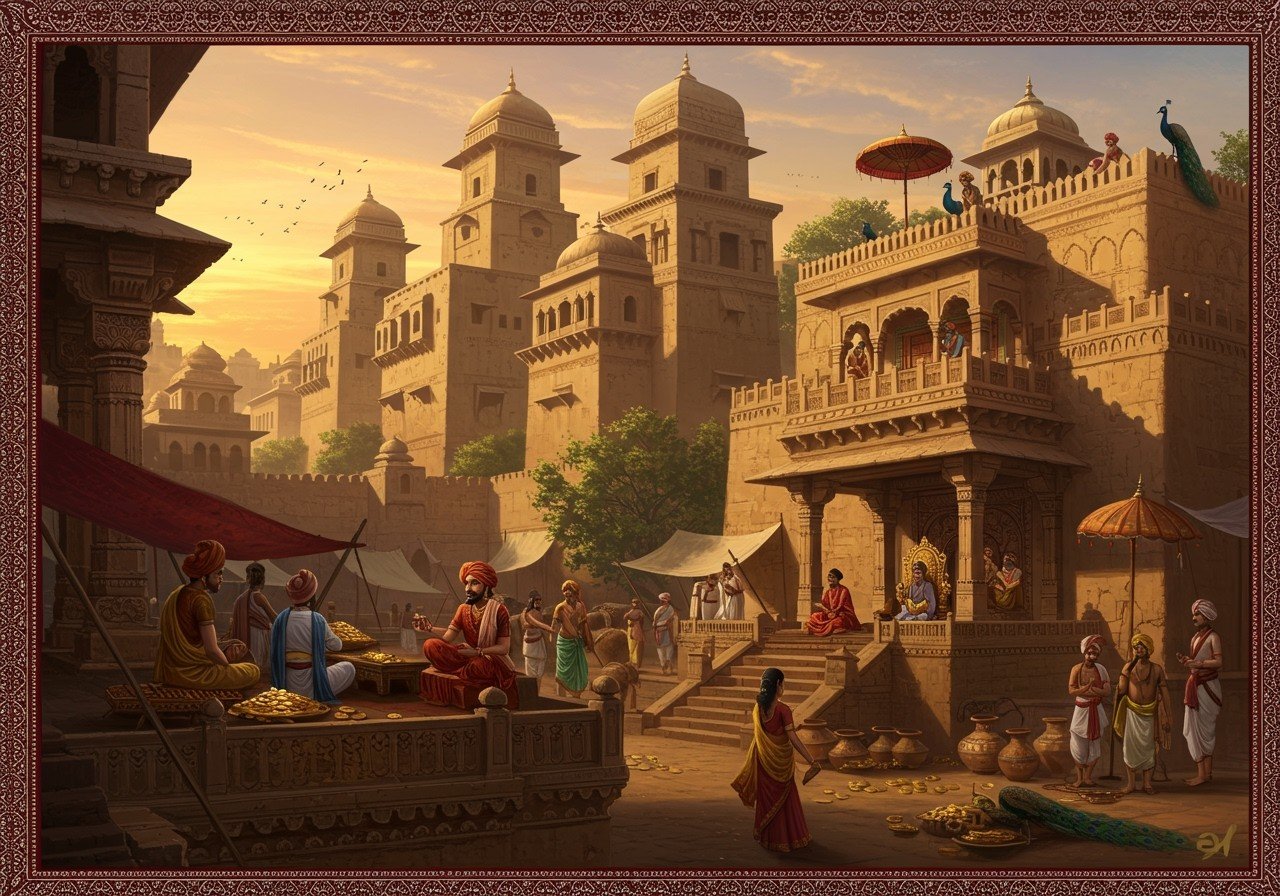
Ancient India, a land of diverse cultures and civilizations, laid the foundation for modern India. A significant aspect of this rich heritage is the concept of Janapadas, early republics that predate kingdoms and empires. Understanding Janapadas offers valuable insights into the organization and governance of ancient Indian communities.
What are Janapadas?
Janapadas were territories representing the earliest form of political organization in ancient India. The term “Janapada” originates from “Jana” (people) and “Pada” (foot), signifying “the foothold of a tribe.” These entities, flourishing between the 12th and 6th centuries BCE, showcase the evolution of societal structures from nomadic tribes to settled communities. They were essentially the building blocks of later, larger political entities like Mahajanapadas.
- Etymology and Significance: The term illustrates the profound connection between people and their land, highlighting the importance of territoriality in ancient Indian society.
- Characteristics: Janapadas varied in size, governance structures, and economic activities, reflecting the diversity of ancient India. Some were small, while others encompassed vast territories. Some focused on agriculture, while others thrived on trade.
- Distinction: Mahajanapadas, emerging around the 6th century BCE, were larger and more powerful than regular Janapadas, often exerting influence over neighboring regions. They represented a further step in political organization, often marked by more centralized authority and complex administrative systems.
- References: Early mentions in ancient texts like the Puranas and Vedas provide valuable historical context and insights into the development of these early republics.
- Importance: Studying Janapadas is crucial for comprehending ancient Indian society, culture, and the evolution of political thought in the subcontinent.
- Role in Diversity: Janapadas fostered regional identities and cultural diversity, contributing to the rich tapestry of ancient Indian civilization. They played a key role in the development of distinct regional languages, customs, and artistic styles.
- Archaeological Evidence: Archaeological findings corroborate the existence of Janapadas, providing tangible evidence of their settlements, infrastructure, and cultural practices.
Janapadas in Ancient India
Ancient India encompassed numerous Janapadas, each possessing unique characteristics and governance structures.
- Prominent Janapadas: Kuru, Panchala, Matsya, and Kosala are among the most prominent Janapadas, known for their influence and contributions to ancient Indian history.
- Geographical Distribution: Their geographical location significantly influenced the culture, economy, and interactions of each Janapada. Those situated along major rivers often benefited from fertile land and trade routes.
- Political Structures: Many Janapadas embraced republican governance, featuring assemblies and citizen participation in decision-making, reflecting early forms of democratic ideals.
- Economic Activities: Agriculture, trade, and craftsmanship were central to the economic life of Janapadas, fostering self-sufficiency and regional specialization.
- Military Aspects: Janapadas developed defense mechanisms to protect their territories and interests, often engaging in conflicts with neighboring entities.
- Notable Rulers: Significant leaders and their contributions shaped the history and trajectory of various Janapadas.
- Cultural Practices: Unique festivals, rituals, and daily life traditions defined the cultural identity of each Janapada.
How did Janapadas come into existence?
The formation of Janapadas marked a pivotal transition from tribal communities to organized political entities.
- Historical Timeline: Migration, settlement, and social evolution played crucial roles in the emergence of Janapadas, reflecting a gradual shift towards settled agricultural societies.
- Role of Agriculture: The development of agriculture enabled stable communities and a sedentary lifestyle, paving the way for the establishment of permanent settlements and territorial control.
- Consolidation Process: Tribes and clans consolidated into larger political units, driven by factors such as shared resources, defense needs, and social organization.
- External Influences: Trade, warfare, and diplomatic interactions with other groups influenced the growth and development of Janapadas.
- Cultural Developments: Evolving cultural practices, beliefs, and social norms shaped the political organization and governance structures of Janapadas.
- Early Texts and Inscriptions: Ancient texts and inscriptions provide valuable evidence of the existence, governance, and social structures of Janapadas.
- Archaeological Discoveries: Archaeological excavations offer insights into the material culture, infrastructure, and daily life of Janapada communities.
Examples of Early Republics
Ancient Indian republics existed as early as the sixth century B.C. The Sakyas of Kapilavastu, located near Nepal, stand out as a notable example. The Mahājanapadas, sixteen powerful states flourishing from the sixth to fourth centuries BCE, encompassed both kingdoms and aristocratic republics. The Gana-Sangha or Gana-Rajya, representing tribe and clan structures, also practiced republican governance.
These ancient republics embraced democratic principles, enabling citizen participation in decision-making processes. This historical context underscores India’s rich tradition of democratic ideals and community governance.
Conclusion
Understanding Janapadas is essential for comprehending the foundations of ancient Indian civilization. These early republics offer a glimpse into the evolution of political and social structures, highlighting the importance of community, governance, and cultural heritage. By studying Janapadas, we honor the legacy of our ancestors and gain valuable insights into the democratic principles and community spirit that shaped ancient India.
Explore Vastu Shastra principles and practices of ancient Indian architecture and the divine feminine in Indian architecture and spiritual expression to delve deeper into the rich cultural heritage of ancient India. For those interested in embarking on a spiritual journey, explore Karnataka’s ancient temples. Poojn.in offers a wide selection of puja items, incense sticks, and religious artifacts to enhance your spiritual practices.


